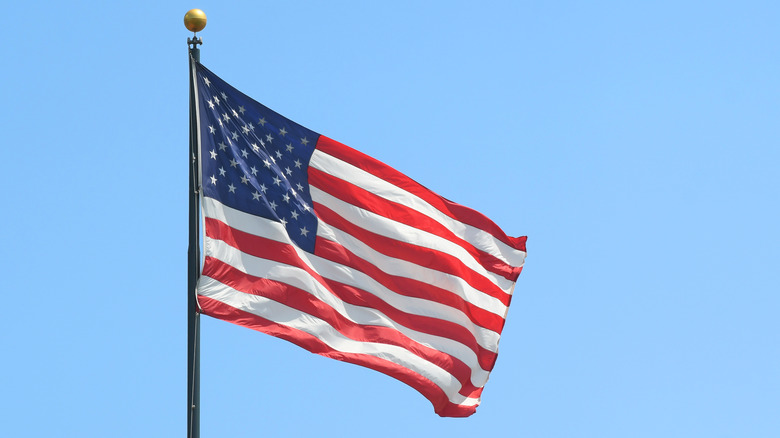Mistakes You Should Never Make When Waving An American Flag
Many people choose to express their love of their country through the varied use of flags. This may come in the form of simply having an actual flag — holding or waving it. It might mean clothing that features the flag's design, or some other form of display. The United States Flag Code was written in 1923 and implemented in 1942. Since that time it has been the official outline on proper and improper use of the American flag and its design (via Star Spangled Flags).
Despite being federal law, there is no punishment associated with violating the code, and as such it is typically not enforceable. With that being said, a violation of flag etiquette can still reflect poorly on an individual in both a social and professional context, and they might be viewed as disrespectful even when they didn't intend offense. Many of these rules go unnoticed by the average person, while others can be taken to unnecessary extremes (via Huffpost).
Rules on the display of U.S. flags can be both stringent and vague
For instance, during processions the flag should be allowed to flow freely and not be held still in any way (via Almanac). Rules on clothes and bedding are less determinate, according to Reader's Digest, as it is technically improper to use the flags in these contexts. "Representations" of the flag can be considered fine, though not all sources agree on this point; neither do they agree on what the line is between a representation and actual use of the flag's design. Flying a flag at half-staff, while a sign of respect, is only meant to mark certain events, such as the mourning of political and military deaths or national tragedies, and should not be used for just anyone or on a whim.
One of the biggest issues is that of dirty or damaged flags. There's a common misconception the flag must subsequently be burned, lest the marred object's continued existence be seen as a sign of disrespect. Per The Waynedale News, this action should only be taken when irreparable damage or "dirtying" has been done to the flag. Otherwise, the washing of the flag, or making necessary repairs, is encouraged. In that same vein, flags should not be thrown out with no regard. Small, inexpensive flags otherwise destined for the trash ideally should be burned or buried. For more information, check out the USA.gov website.

